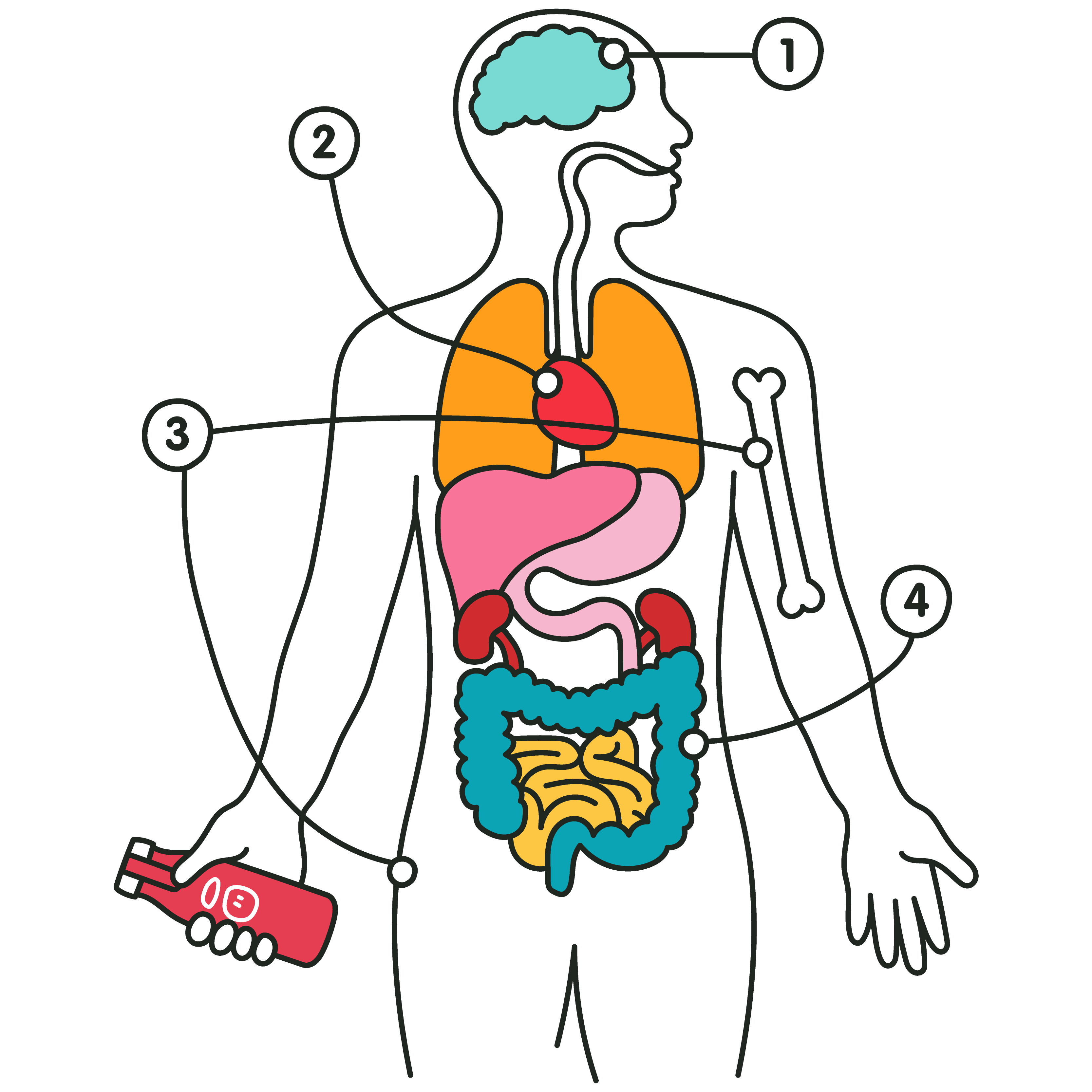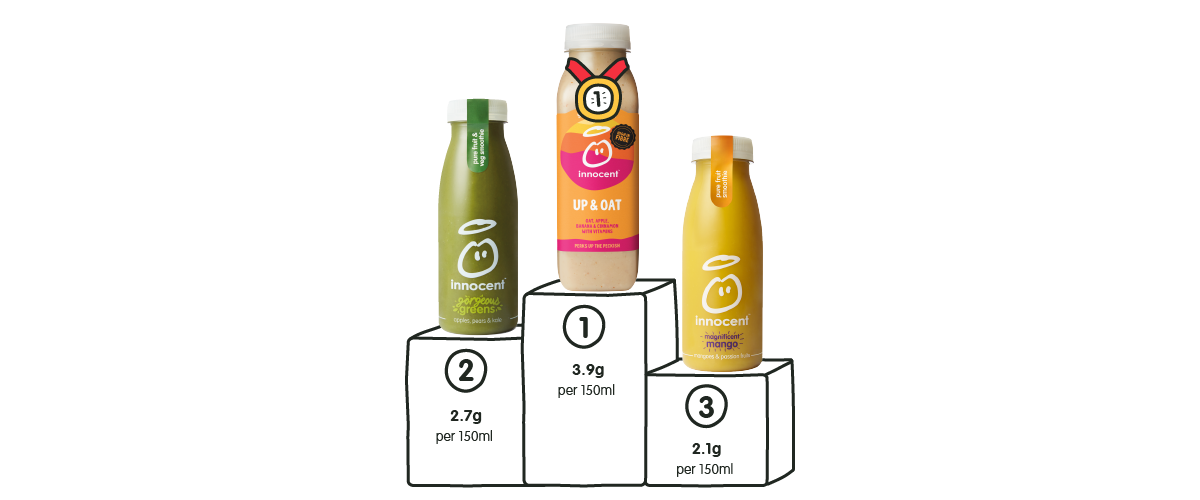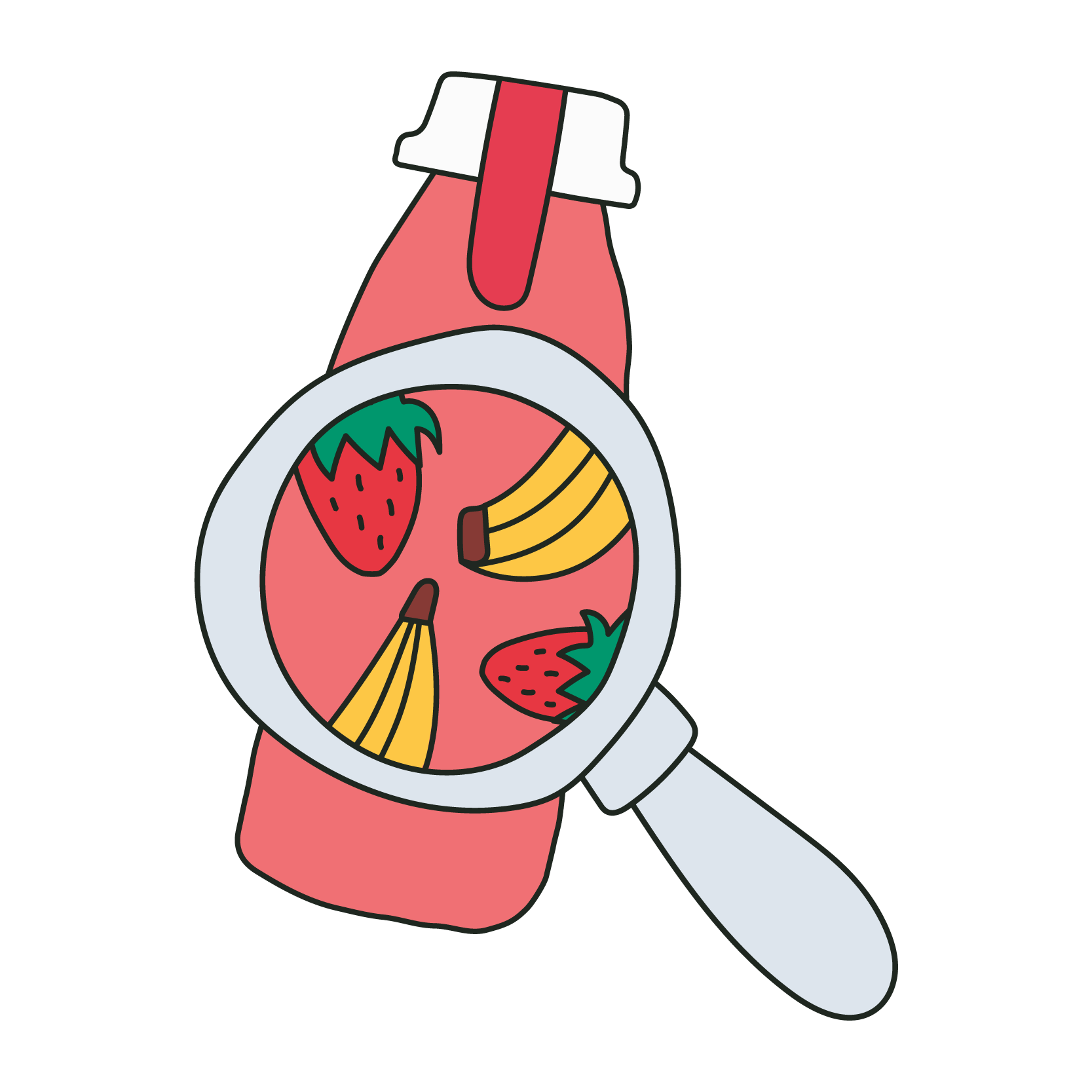© 2021 Fresh Trading Limited. All right reserved.
brimming with good stuff
We all know that eating fruit and veg is good for you. That’s because it's full of important stuff like vitamins, minerals, fibre and phytonutrients that help our bodies do what they do best. Eating (or drinking) a rainbow of fruit and veg helps you to get a bunch of these clever nutrients into your diet.
Between our smoothies and juices, we use over 32 different types of the finest fruit and veg, and pop at least five of them into every smoothie we make. Here's a bit more info on what this good stuff from Mother Nature actually does, and how it can look after that body of yours.
vitamins and minerals
There are 13 types of vitamins and a whole load of minerals that your body needs to tick along nicely. Each of our smoothies and juices naturally combine some of these micronutrients (a fancy term to describe vitamins and minerals), which help you out in slightly different ways. Here's some of the natural goodness that's inside one of our old favourites:
how they help

how folate helps
Folate maintains the normal function of your brain, immune system and blood formation. It also helps with the reduction of tiredness and fatigue, the process of cell division and normal amino acid synthesis.
how potassium helps
Potassium maintains the normal function of your nervous system, muscles and blood pressure.
how manganese helps
Manganese looks after the normal formation of connective tissue, the maintenance of bones and your normal energy-yielding metabolism. It also protects your cells from oxidative stress.
how vitamin C helps
Vitamin C supports the normal function of your immune system, increases iron absorption and helps reduce tiredness and fatigue. A 150ml glass of orange juice with bits will give you 46% of your daily vitamin C.
Enjoy our drinks as part of a healthy lifestyle and balanced diet.
phytonutrients
If you want to sound like you know what you're talking about, just drop the word phytonutrients (pronounced 'fight-o-nutrients') into a sentence. Phytonutrients is the name given to a variety of natural plant compounds that are found in fruit, veg, legumes and wholegrains. There are over 5,000 of them and they help give plants their colour, taste and smell. Lots of research is underway to properly understand what they do for the human body, but we already know they have antioxidant and anti-inflammatory benefits that help reduce the risk of some chronic conditions1.
To find out more about them, we asked some scientists at the University of Aberdeen to look into the phytonutrients in our juices and smoothies. They discovered there were all sorts of different types across our various recipes. Our strawberry and banana smoothie had the greatest range of phytonutrients (including ferulic and chlorogenic acid) and our orange juice had the highest level of any one type (called hesperidin). Then they kindly wrote up their findings and published it over here. While it might not have made the Booker Prize shortlist, we reckon it’s pretty interesting stuff – so grab a cup of tea, find a comfy chair and settle in.
1. Wang X, Ouyang YY, Liu J, Zhu MM, Zhao G, et al. (2014) Fruit and vegetable consumption and mortality from all causes, cardiovascular disease, and cancer: systematic review and dose-response meta-analysis of prospective cohort studies. BMJ 349: 14.
fibre
There's a reason why we left this bit until last. Although fibre is really good for you, it's not easy to talk about without getting into some unsavoury details. Simply put, fibre is the stuff that doesn't get digested by your gut and plays an important role in keeping your digestive system healthy. Eating plenty of it is associated with a lower risk of heart disease, strokes, type 2 diabetes and bowel cancer1.

However, a lot of people in the UK aren't getting enough fibre in their diets. While we should be eating or drinking about 30g of fibre a day, most adults are getting a lot less than that.
All our smoothies are a natural source of fibre and provide 1-4g of it per 150ml serving. If you're wondering whether the fibre in one of our smoothies is the same as the fibre in a piece of fruit or veg, it turns out it is. We took a few bottles into the labs at the University of Leeds and under a microscope, the fibre cells look just like the ones you'd find in whole fruit and veg. So that's good news. For anyone who likes reading research about fibrous cellular structures, take a look here.
https://www.nhs.uk/live-well/eat-well/how-to-get-more-fibre-into-your-diet

